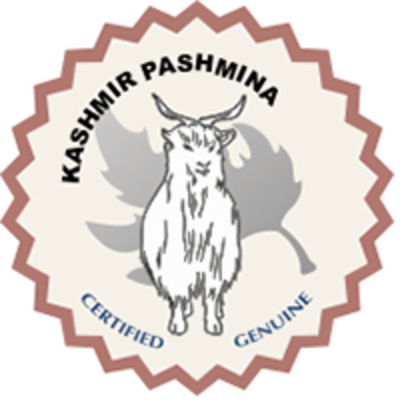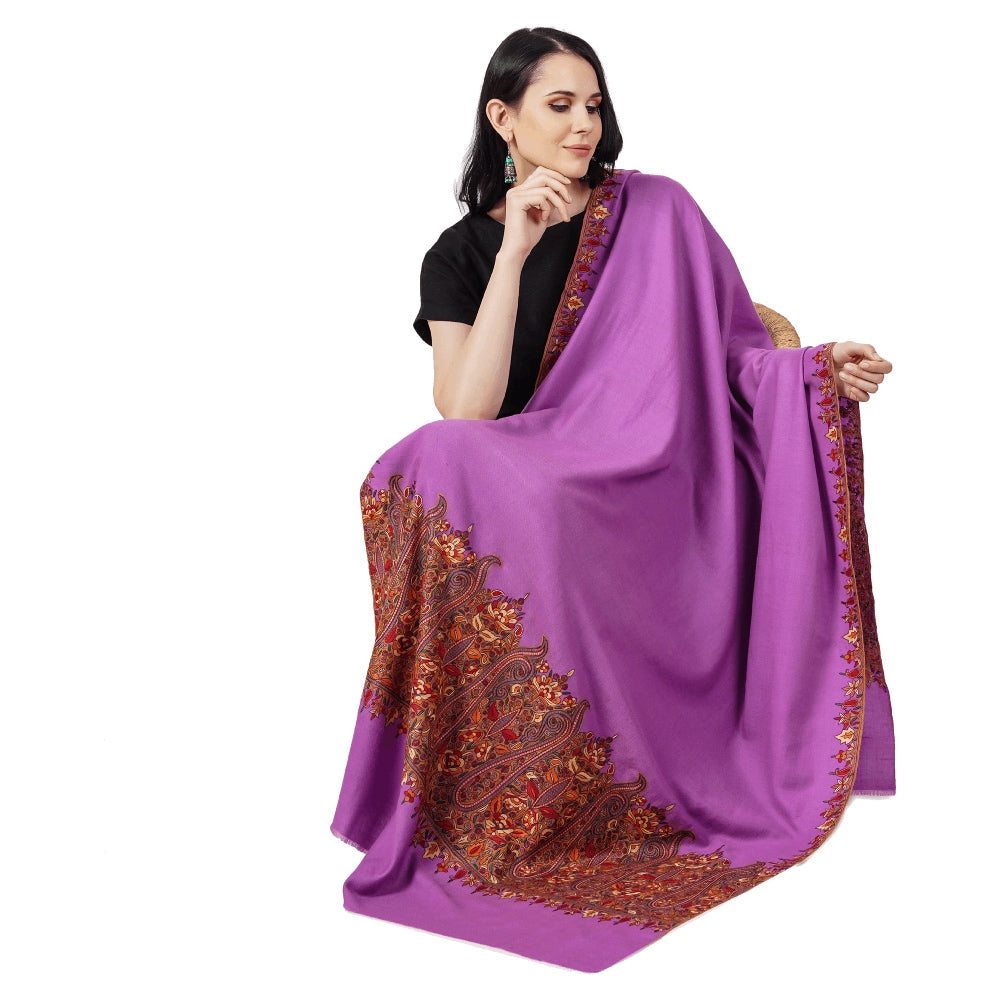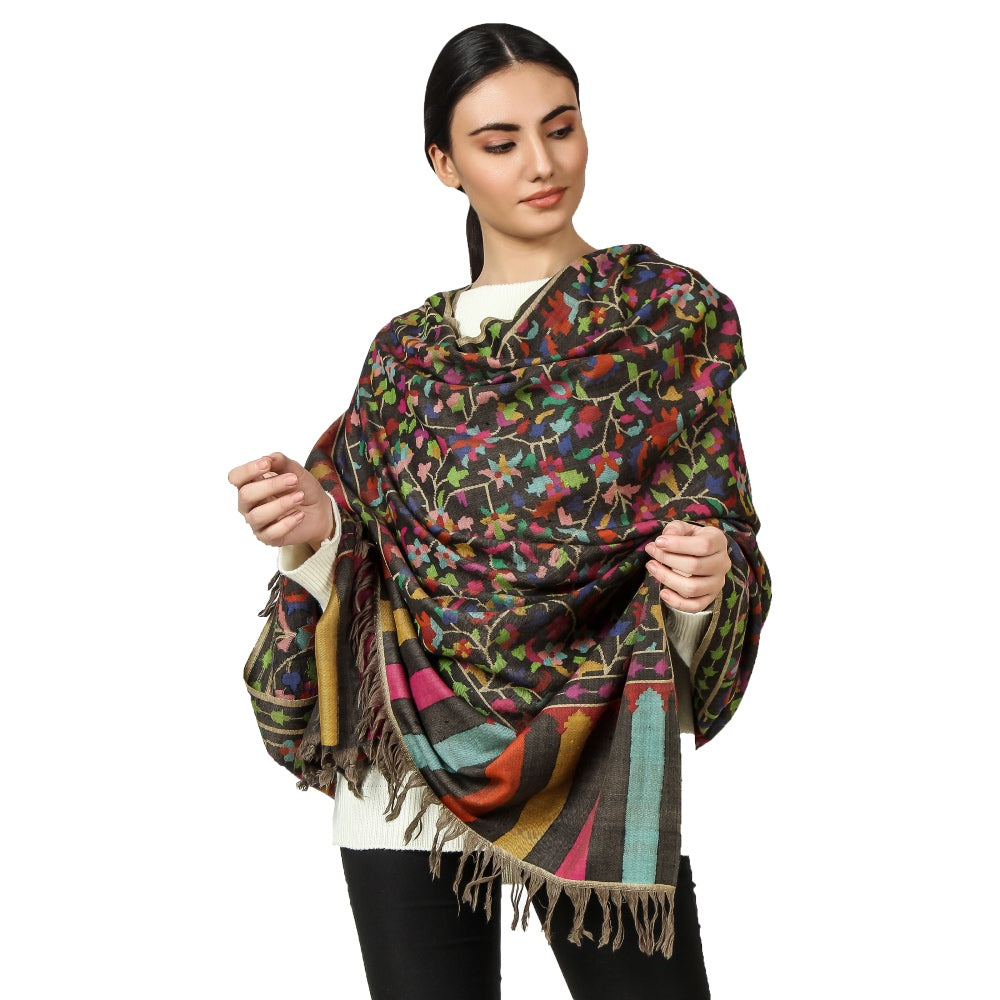
What is GI Pashmina?
Share
GI Pashmina is a term used to describe Pashmina products that have been certified under the Geographical Indication (GI) tag. This certification ensures that the product is authentic and has been made using traditional techniques by skilled artisans in a specific geographical region, in this case, the Kashmir region of India. The GI tag protects the intellectual property rights of the artisans and ensures that customers receive a genuine product.
Brief history of Pashmina

Pashmina is a fine wool that comes from the underbelly of Himalayan mountain goats. The wool is known for its softness, warmth, and lightweight texture, making it highly sought after. The term "Pashmina" originates from the Persian word "Pashm" which means wool. Pashmina shawls and scarves have been produced in the Kashmir region of India for centuries and were highly valued by the Mughal emperors. The craft of Pashmina weaving has been passed down from generation to generation, and today, it is an important source of livelihood for many artisans in the region. However, due to the rise of counterfeit products and mass production, the authenticity and quality of Pashmina products have been threatened. Hence, the GI tag was introduced to protect the artisans and the traditional craft of Pashmina weaving.
Also read: What is so special about Pashmina shawls
What is Pashmina

Pashmina refers to a fine and lightweight wool that is obtained from the underbelly of the Capra hircus goat found in the Himalayan region. It is known for its softness, warmth, and durability, making it highly valued in the fashion industry.
The origin of Pashmina
The production of Pashmina dates back to ancient times, with evidence of its use found in the Indus Valley Civilization around 3300 BCE. Pashmina has been traditionally produced in the Kashmir region of India, as well as parts of Nepal and Tibet, due to the harsh climate and availability of the Capra hircus goat. The region's unique climate conditions result in the development of a thick inner coat in the goats during the winter months, which is then shed in spring, making it ideal for Pashmina production.
The production process of Pashmina

Pashmina wool is obtained by combing the soft undercoat of the Capra hircus goat, which is then spun into fine yarn. The process is highly labor-intensive and requires great skill, with the goats being combed by hand using a metal comb. The fibers are then sorted by hand, with the softest and finest fibers being separated for Pashmina production. The wool is then cleaned and washed, and the fibers are spun into fine yarn using a spindle or a traditional wheel. The yarn is then woven into shawls or scarves using traditional handloom techniques. The entire process can take up to several months and requires the expertise of skilled artisans to create high-quality Pashmina products.
Also read: A Journey through the time: The History of Pashmina Shawls
What is GI (Geographical Indication)
(GI) is a tag that is given to products that are produced in a specific geographical region and have unique qualities or characteristics that are attributed to that region. It is a form of intellectual property right that identifies and protects the geographical origin of a product, and ensures that consumers receive genuine and high-quality products.
The purpose of GI
The purpose of GI is to protect the intellectual property rights of producers and artisans who produce goods that are associated with a particular region. It ensures that the unique qualities and characteristics of a product that are attributed to a specific geographical region are maintained and protected. GI also helps in promoting and preserving traditional crafts and practices, and in creating market demand for such products.
The benefits of GI
The benefits of GI are manifold. It helps in protecting the rights of producers and artisans, and in promoting the unique qualities and characteristics of a product associated with a particular region. It also helps in preserving traditional practices and crafts, and in promoting sustainable development by providing economic opportunities to rural and marginalized communities. GI certification also ensures that consumers receive genuine and high-quality products, which in turn promotes consumer confidence and trust. Moreover, it helps in promoting tourism and cultural exchange by showcasing the unique features of a particular region.
Explanation of GI Pashmina

GI Pashmina is a certification that is given to Pashmina products that are produced in the Kashmir region of India using traditional techniques by skilled artisans. The GI tag ensures that the product is authentic and has been made using traditional methods that have been passed down from generation to generation. The certification also helps in protecting the intellectual property rights of the artisans and ensures that customers receive genuine and high-quality products.
The significance of GI Pashmina
The significance of GI Pashmina lies in the protection and preservation of the traditional craft of Pashmina weaving, which is an important source of livelihood for many artisans in the Kashmir region. The certification ensures that the unique qualities and characteristics of Pashmina products that are attributed to the region are maintained and protected. It also helps in promoting sustainable development by providing economic opportunities to rural and marginalized communities. Additionally, GI Pashmina helps in promoting cultural exchange and in showcasing the unique features of the Kashmir region.
The characteristics of GI Pashmina
GI Pashmina products are known for their fine and lightweight texture, softness, and warmth. They are made from the underbelly wool of the Capra hircus goat found in the Himalayan region, and are produced using traditional methods that have been passed down from generation to generation. The weaving of Pashmina requires great skill and expertise, with the entire process being highly labor-intensive. The unique climate conditions of the Kashmir region result in the development of a thick inner coat in the goats during the winter months, which is then shed in spring, making it ideal for Pashmina production. GI Pashmina certification ensures that the products are authentic and have been made using traditional techniques by skilled artisans in the Kashmir region of India.
The Importance of GI Pashmina
Preservation of traditional craftsmanship
The GI Pashmina certification plays a crucial role in preserving the traditional craftsmanship of Pashmina weaving in the Kashmir region. The certification ensures that the products are made using traditional methods that have been passed down from generation to generation, and that the unique qualities and characteristics of Pashmina products that are attributed to the region are maintained and protected. This helps in promoting the continuity of the traditional craft and in preserving the cultural heritage of the region.
Empowerment of artisans

The GI Pashmina certification helps in empowering the artisans who produce Pashmina products by providing them with economic opportunities and recognition for their traditional skills. The certification ensures that the intellectual property rights of the artisans are protected, and that they receive fair compensation for their work. This helps in promoting sustainable development by providing economic opportunities to rural and marginalized communities.
Protection of consumers
The GI Pashmina certification also provides protection to consumers by ensuring that they receive genuine and high-quality products. The certification guarantees that the products are made using traditional methods and that they have been produced in the Kashmir region of India. This helps in promoting consumer confidence and trust, and ensures that consumers are not deceived by imitation or fake products.
In conclusion, the GI Pashmina certification is essential for preserving the traditional craftsmanship of Pashmina weaving, empowering the artisans who produce Pashmina products, and protecting consumers from imitation or fake products. The certification ensures that the unique qualities and characteristics of Pashmina products that are attributed to the Kashmir region are maintained and protected, promoting the cultural heritage of the region and contributing to sustainable development.
How to identify GI Pashmina
Labeling and Certification
One of the most reliable ways to identify GI Pashmina is through labeling and certification. Look for products that carry the GI Pashmina certification mark, which is a logo that confirms that the product has been certified as genuine by the Geographical Indications Registry. The certification mark is usually displayed on the product label or packaging.
Visual and tactile identification
GI Pashmina products have certain visual and tactile characteristics that are unique to them. Pashmina products are known for their fine and lightweight texture, softness, and warmth. They are typically made using a twill weave or a plain weave, and are often adorned with intricate embroidery or designs. When examining a Pashmina product, look for the quality of the weave, the thickness and softness of the fabric, and the fineness of the embroidery or designs.
Price and authenticity
The price of GI Pashmina products can also be an indicator of their authenticity. Pashmina is a luxury product, and genuine Pashmina products are often priced higher than imitations or fakes. Be wary of products that are priced too low, as they may be made from inferior materials or may not be authentic Pashmina products at all.
Conclusion
GI Pashmina is a certification mark that confirms that Pashmina products have been made using traditional methods and materials from the Kashmir region of India. The certification plays a crucial role in preserving the traditional craftsmanship of Pashmina weaving, empowering artisans, and protecting consumers from imitation or fake products.
To promote and preserve GI Pashmina, consumers can support the artisans who produce Pashmina products by purchasing certified products and raising awareness about the importance of the certification. Governments and organizations can also support the certification by providing funding for research and development, and by implementing policies that protect the intellectual property rights of artisans.
The future prospects for GI Pashmina look promising, as more consumers become aware of the importance of supporting traditional craftsmanship and promoting sustainable development. The certification has the potential to create economic opportunities for rural and marginalized communities, and to contribute to the cultural heritage of the Kashmir region. With continued support and promotion, GI Pashmina can continue to thrive and make a positive impact on the world.





